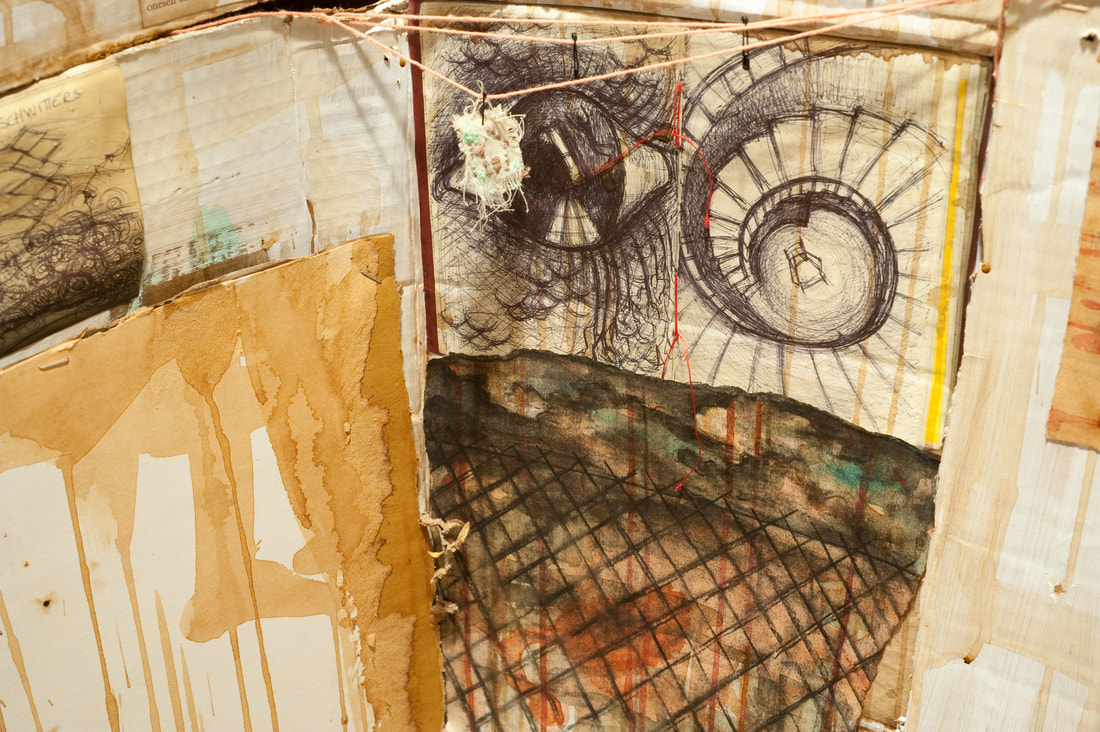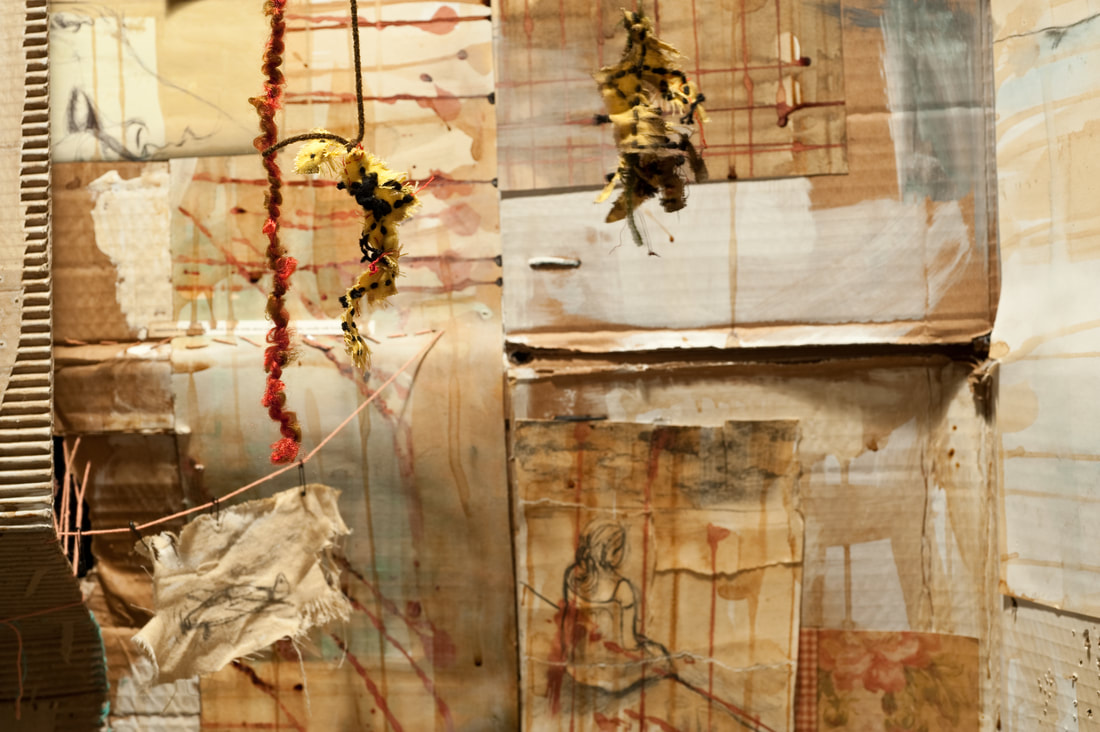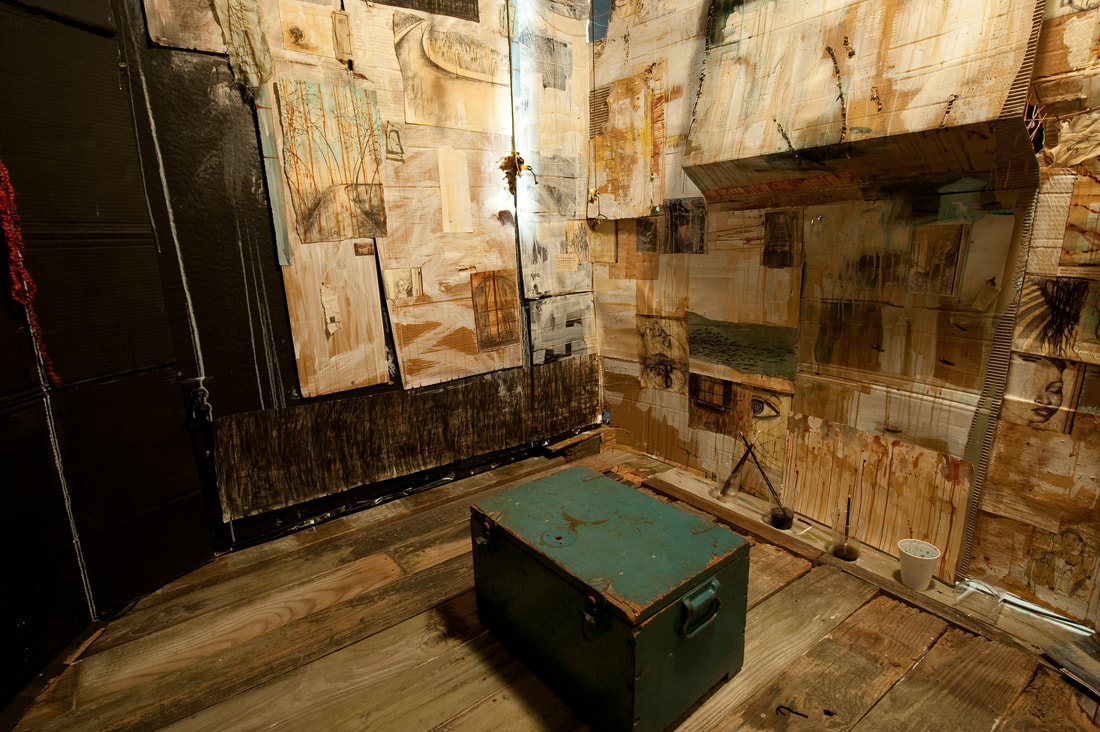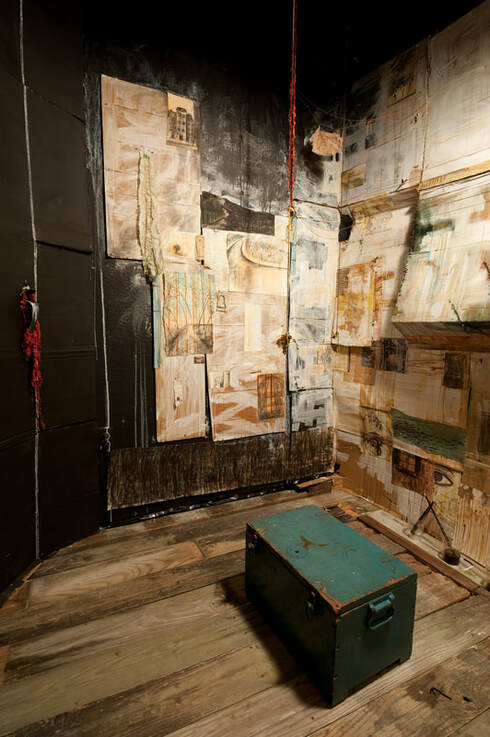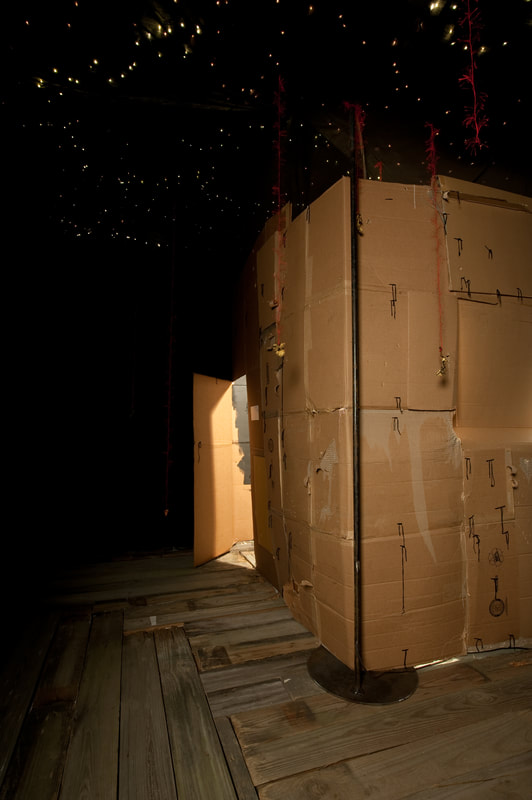The narrative of the installation begins with the subject stepping into a drawing of a wooden floor. As she takes a few more short steps, the drawing becomes a meta-narrative of the multiple worlds that the subject inhabits all at once, encompassing her present space as well as the space that she constructs in another dimension. The narrative suddenly proceeds to take hold of the subject as she finds herself in a dark room wherein the treatment of space and light trick the senses. The absence of light disorients the subject, thereby creating a feeling of groundlessness as well as a feeling of being enclosed while at the same time providing a feeling of open space that the subject is afraid to explore because of the disorientation that it creates. The subject has to adjust to the groundlessness of the dark and rely on her other senses to perceive the space of the room, smelling the old wood from the creaky and loose wooden floor, the intoxicating aroma of coffee that masks the drawings in the next room, as well as the disagreeable smell of cardboard coming from the walls of the next room. The subject also feels something hanging from the ceiling brushing against her, holding her, reaching out for her, and not allowing her to leave. She is not able to see what they are until her eyes finally adjust to the darkness of the room with the aid of the starlit sky above and the small rays of light piercing through the holes from the walls of the other room. The things brushing against her are in fact patches of the Star of David hanging by thin red threads, the Star of David patches being shredded and covered with coffee. She then notices that the holes that finally allow her to see lead to a small door to another room which is lit by a shower of light and provides a visual diary of her memories and objects of the imagination. The walls in this other room are covered by layers of drawings of the things she wants to remember, such as trees, windows, even faces of the people she remembers, and imaginary places where she yearns to be. Situated in the middle of the room is a small aqua chest that contains some of the subject's belongings: her sketchbook, charcoal, and other personal items that she likes to carry with her wherever she goes. In front of the chest, there is a tall door. The tall door has a peephole that reveals another dimension in which the subject sees a person walking through a hallway aligned with doors on each side and, at the far end of the hallway, a green open field is visible on the horizon. Though the person seems to be walking through the hallway, she never reaches the end of the hallway and never actually goes anywhere. Therefore, the rooms entice the viewer to construct the subject's narrative as she attempts to create a solidarity between her memories, dreams, and the tangible world while her own physical existence and survival of the other worlds she has created are threatened.
